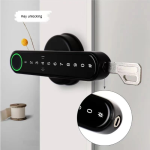Many educational campuses, hotels, YMCAs and fitness centers count on-site pools among their top amenities. These aquatic facilities host swim teams, diving and water polo programs, community swim meets and structured lessons that teach children and teens lifelong water-safety skills. Surveys indicate 44 percent of U.S. adults lack basic swimming abilities, underscoring the importance of early instruction. Pools also serve as community hubs where teamwork, fitness and safety come together.
Pools demand strict safety measures. According to CDC data, drowning ranks second among unintentional injury deaths for children aged five to fourteen, trailing only vehicle crashes in that bracket. In addition to fatalities, thousands of near-drowning incidents each year result in non-fatal brain injuries that often require lengthy hospital stays and extensive rehabilitation, impacting families and communities over the long term.
Legal and reputational stakes run high when pool perimeters go unprotected. Many states require secure fencing, self-latching gates and controlled-entry alarms, with precise standards for gate height and latch operation. School districts or community centers that lack these safeguards risk fines, citations or lawsuits—actions that can arise when no actual injury occurs on campus grounds.
Controlling access to pool perimeters is vital for student safety and risk management. Yet many commonplace boundary devices—hardware-store latches, chain systems and slide bolts—are not built to withstand the high volume of openings on a busy campus or public facility, and they offer little incentive for curious children to stop testing their limits.
Self-closing gates fitted with spring-loaded latches meet many private-pool codes and cost little to install, but they often fail in high-traffic settings. Young students can push, twist or shim over a simple latch, giving them unsupervised access. These components sell for a few dollars but offer minimal resistance against determined attempts to open them, creating a persistent safety gap.
Durability concerns plague standard latches in outdoor, nearly constant use. Rain, freezing temperatures and UV rays can corrode metal springs or warp plastic housing, causing latches to stick or fail entirely. A once-secure gate may sit ajar without anyone realizing it, exposing children to accidental entry and heightening the risk of drowning or injury.
Lock-based hardware raises security by demanding a deliberate action for each entry. A keyed padlock or cylinder lock requires users to carry and use a physical key, discouraging impromptu gate openings. Many models boast hardened shackles, protective weather seals and corrosion-resistant finishes, designed to resist cutting and stand up to heavy-use campus environments.
Keyed solutions bring new challenges. People carrying clipboards, towels or maintenance tools might leave a key hanging in a gate latch or drop it into landscaping. That single error can leave an access point unsecured without anyone noticing. In busy settings like hotels or recreation centers, misplaced keys often trigger emergency callouts and disrupt daily schedules.
Losing a universal master key can compromise multiple entry points at once. A key that opens pool enclosures, locker rooms and equipment sheds can become a security nightmare if lost or stolen. Replacing all affected cylinders or padlocks may require substantial labor and expense, and leave facilities out of service for days.
Coded lock systems eliminate the need for metal keys by shifting to numeric or alphanumeric entry codes. Authorized staff punch in a personal PIN on a sealed, weatherproof keypad to unlock the gate. Code entry adds an extra layer of security and auditability, as administrators can assign distinct sequences to lifeguards, coaches or maintenance crews and track individual access. Many coded systems support time-based locking schedules, ensuring pool gates secure themselves overnight and unlock automatically before morning lessons.
Updating access codes takes mere seconds. At program’s end or during staff turnover, managers can delete outdated sequences and provision new ones without waiting for a locksmith. Some electronic lock platforms even allow remote programming from a central control panel or mobile device, reducing downtime and easing the burden on facility teams.
Emergency responders gain faster entry with coded gates. A supervisor or dispatcher can provide a valid code to fire, police or medical teams, avoiding delays tied to finding a keyholder or forcing hardware. Many coded lock designs include a hidden mechanical override key so campus managers retain backup access if batteries die or a code malfunctions.
Coded hardware proves useful across many campus zones, including locker storage cabinets, gym-equipment rooms, maintenance workshops and playground enclosures. Standardizing on one series of locks streamlines training, spare-parts inventory and routine maintenance, keeping operations consistent and efficient. Integrations with mobile apps or access-control software allow managers to monitor multiple sites in real time, further simplifying oversight.
Event organizers at community centers and YMCAs often stage swim meets, birthday parties or training camps requiring external coaches and volunteers. Temporary guest codes grant pool-deck access only for the event’s duration, then expire automatically—eliminating the need to track borrowed keys and reducing administrative workload.
Fitness centers with aqua-fitness or rehabilitation programs can tie entry codes directly to class schedules, preventing unscheduled visits. This targeted control safeguards equipment, preserves member privacy and lightens front-desk demands by automating access management through digital registration systems.
Adopting coded locks delivers measurable cost savings. Removing the need for spare-key inventories, key-cutting services and emergency rekey callouts frees maintenance budgets. Over a typical school year or club season, time and dollars saved on replacing lost keys, cutting new locks and conducting onsite locksmith visits can add up significantly. These savings free resources that can then be redirected to additional safety features, improved water-quality testing or instructor training programs.
Advanced coded-lock systems often maintain digital logs that record every unlock event with date, time and user code. Administrators can review these audit trails to verify staff schedules, investigate unauthorized entry attempts or support security investigations after hours, offering a level of transparency that traditional keys cannot match.
Safe pool perimeters complement broader drowning-prevention efforts. The New York Times has described U.S. drowning rates as a “public health crisis,” with nearly 4,000 fatalities recorded each year. The U.S. National Water Safety Action Plan identifies education and controlled access as critical measures. By pairing solid perimeter security with structured swim instruction, facilities can guard against needless water-related tragedies.



